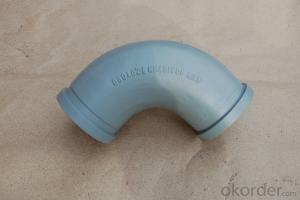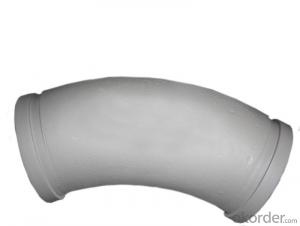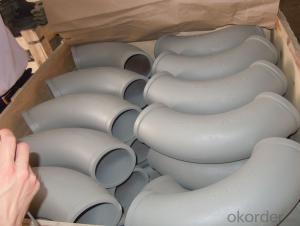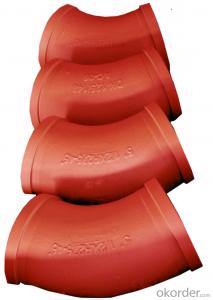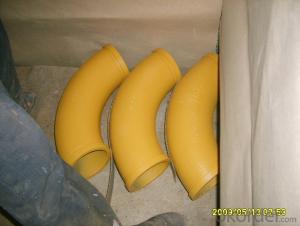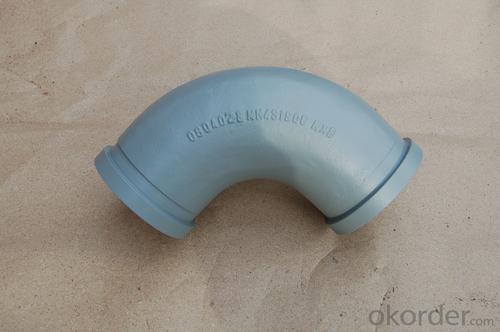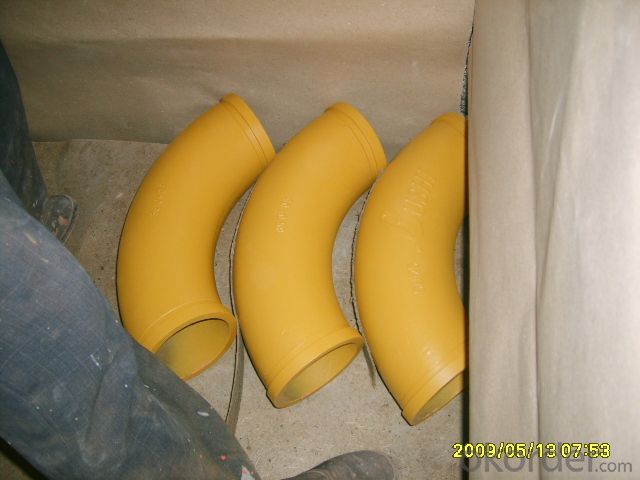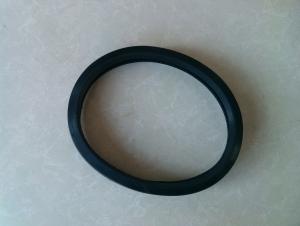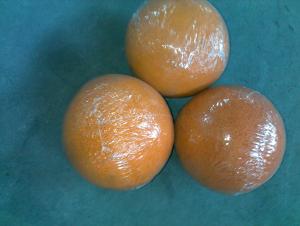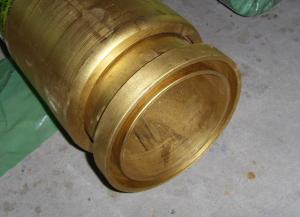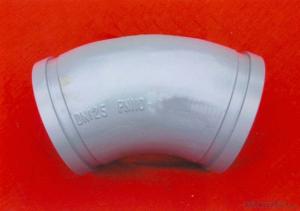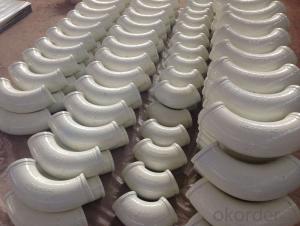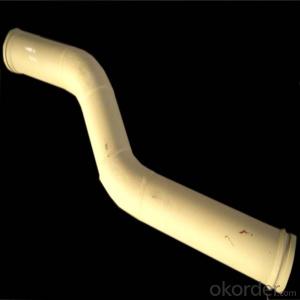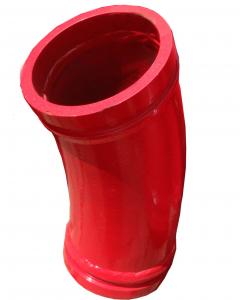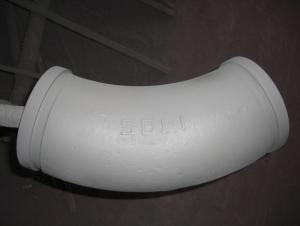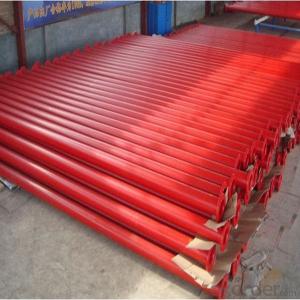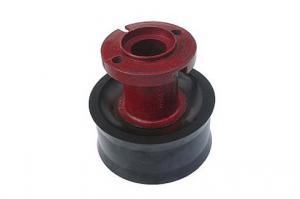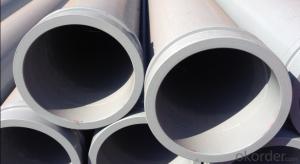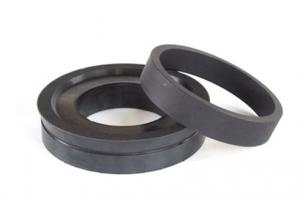Concrete Pump Truck Parts Elbow Bend DN100 R152.4 90DGR 148MM Mn13-4 Casting
- Loading Port:
- China Main Port
- Payment Terms:
- TT OR LC
- Min Order Qty:
- -
- Supply Capability:
- -
OKorder Service Pledge
Quality Product, Order Online Tracking, Timely Delivery
OKorder Financial Service
Credit Rating, Credit Services, Credit Purchasing
You Might Also Like
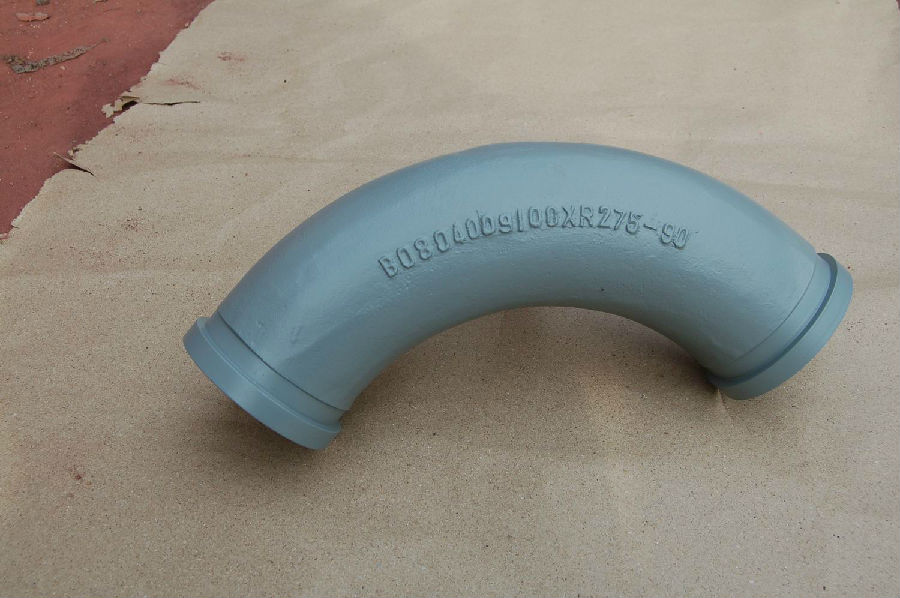
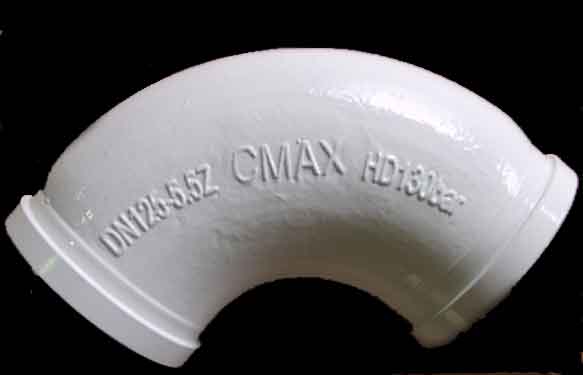
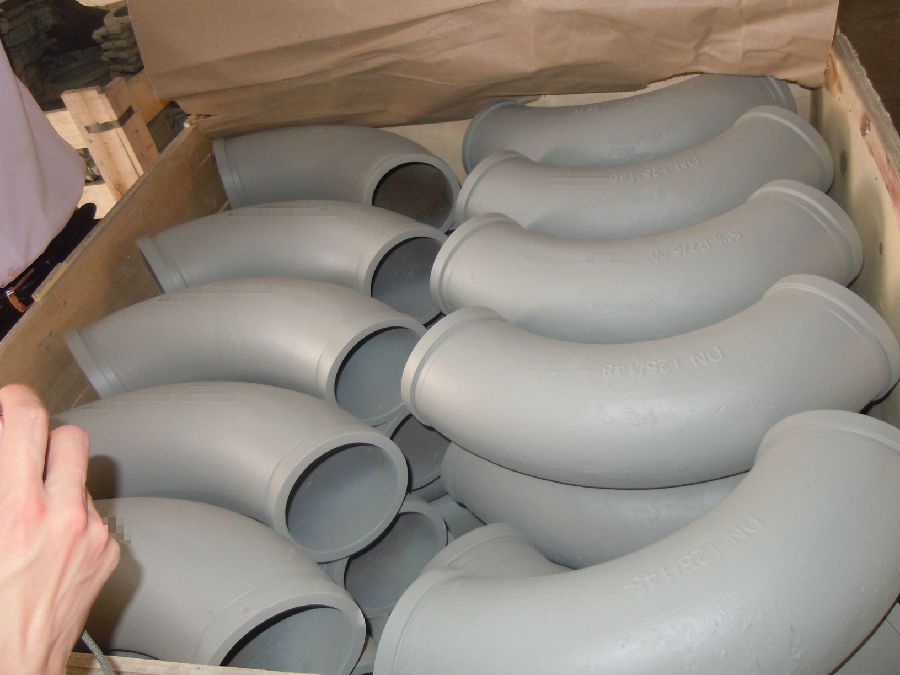
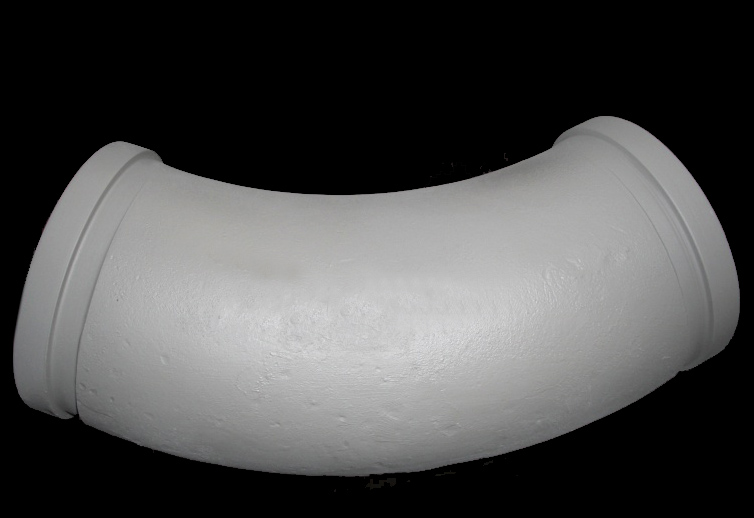
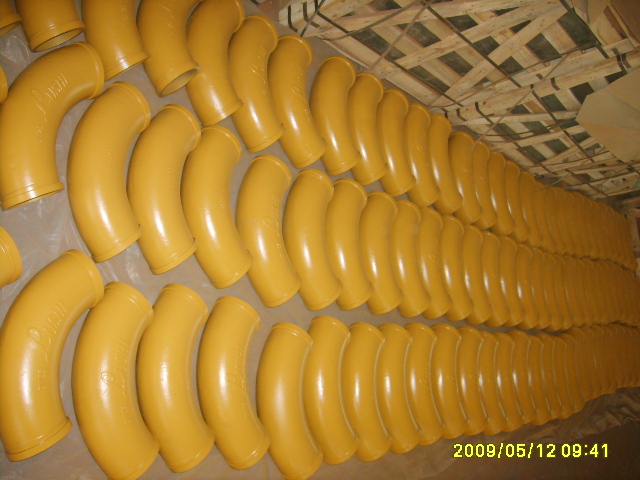
Product Description:
Product Name: Concrete Pump ELBOW DN100
1. Specification of Concrete Pump ELBOW DN100
Dimensions: DN100
Radius: 152.4mm
Flange: SK, ZX, F&M
Degree: 90
Material: #20 steel, ST52
Thickness: 4.5mm,6mm,7.1mm,7.5mm,10mm,
Working pressure: 180MPa
Notes: total series of concrete pump ELBOW for different brand concrete pump(PUTZMEISTER, SCHWING, CIFA, SANY, ZOOMLION, IHI, KYOKUTO Etc) available from us.
2. Application of Concrete Pump ELBOW DN100
Widely used on concrete pump truck, concrete placing boom, trailer concrete pump etc, for concrete delivery pipe connection.
Our concrete pump bends have been successfully exported to many countries from 1998, Our main markets as below: Middle East, Southeast Asia, America, Brazil, Italy, Russia, South Africa etc
Aiming at the largest concrete pump parts manufacturer, and reliable, professional supplier in China, we can supply concrete pump elbows, delivery pipes, casting or forging couplings, end rubber hoses, rubber pistons, tungsten wear plates, delivery cylinders, and other hydraulic parts, one stop service for your concrete pump parts and accessory business.
3. Package and Delivery of Concrete Pump ELBOW
Every 30pcs put in one seaworthy wooden box, and 20 boxes in one 20feet container.
Product Name: Concrete Pump ELBOW DN100
1. Specification of Concrete Pump ELBOW DN100
Dimensions: DN100
Radius: 152.4mm
Flange: SK, ZX, F&M
Degree: 90
Material: #20 steel, ST52
Thickness: 4.5mm,6mm,7.1mm,7.5mm,10mm,
Working pressure: 180MPa
Notes: total series of concrete pump ELBOW for different brand concrete pump(PUTZMEISTER, SCHWING, CIFA, SANY, ZOOMLION, IHI, KYOKUTO Etc) available from us.
2. Application of Concrete Pump ELBOW DN100
Widely used on concrete pump truck, concrete placing boom, trailer concrete pump etc, for concrete delivery pipe connection.
Our concrete pump bends have been successfully exported to many countries from 1998, Our main markets as below: Middle East, Southeast Asia, America, Brazil, Italy, Russia, South Africa etc
Aiming at the largest concrete pump parts manufacturer, and reliable, professional supplier in China, we can supply concrete pump elbows, delivery pipes, casting or forging couplings, end rubber hoses, rubber pistons, tungsten wear plates, delivery cylinders, and other hydraulic parts, one stop service for your concrete pump parts and accessory business.
3. Package and Delivery of Concrete Pump ELBOW
Every 30pcs put in one seaworthy wooden box, and 20 boxes in one 20feet container.
- Q: How often should concrete pump pistons be inspected and replaced?
- Concrete pump pistons should be inspected regularly, ideally after every 200 to 300 hours of operation or at least once every three months. The frequency of replacement will depend on various factors such as the quality of materials being pumped, the pumping conditions, and the maintenance practices followed. However, as a general guideline, pistons should be replaced when signs of wear and tear, such as cracks, excessive leakage, or loss of pumping efficiency, become noticeable during inspections.
- Q: How can one ensure compatibility between concrete pump spare parts and the pump?
- To ensure compatibility between concrete pump spare parts and the pump, it is essential to follow the manufacturer's guidelines and specifications. This includes sourcing spare parts from authorized dealers or reputable suppliers who specialize in concrete pump equipment. Additionally, maintaining a thorough understanding of the pump's model, make, and technical requirements can help in selecting the correct spare parts. Regular inspection and maintenance of the pump can also help identify any potential issues or parts that may need replacement, ensuring smooth compatibility between the pump and its spare parts.
- Q: What is the purpose of a concrete pump hopper agitator motor?
- The purpose of a concrete pump hopper agitator motor is to ensure the smooth and consistent flow of concrete within the hopper. The agitator motor is responsible for mixing and agitating the concrete mixture, preventing it from settling or becoming too thick. This motor helps to keep the concrete in a fluid state, ensuring that it can be easily pumped and distributed through the delivery system. Without the agitator motor, the concrete mixture may become stiff, leading to blockages and delays in the pumping process. Overall, the purpose of the concrete pump hopper agitator motor is to maintain the quality and efficiency of concrete pumping operations by keeping the mixture well-mixed and flowing smoothly.
- Q: What are the signs of a malfunctioning concrete pump control valve?
- Some signs of a malfunctioning concrete pump control valve may include erratic or inconsistent flow of concrete, difficulty in controlling the pump speed, leaking or dripping of hydraulic fluid, unusual noises or vibrations coming from the valve, and unresponsive or delayed response to control inputs.
- Q: How often should I replace concrete pump spare parts?
- The frequency at which you should replace concrete pump spare parts depends on various factors such as the quality of the parts, the intensity of usage, and regular maintenance. Generally, it is recommended to conduct regular inspections and maintenance to identify any signs of wear or damage in the spare parts. As a preventive measure, it is advisable to replace parts that show significant wear or are no longer functioning optimally. However, it is crucial to follow the manufacturer's guidelines and recommendations for the specific concrete pump model you are using. Additionally, consulting with experienced professionals or technicians in the field can provide valuable insights on the expected lifespan of different spare parts and when replacements may be necessary.
- Q: What is the function of a concrete pump control lever?
- The function of a concrete pump control lever is to regulate the flow and direction of concrete being pumped, allowing the operator to precisely control the placement and distribution of concrete during construction projects.
- Q: Are there any environmental considerations in the production of concrete pump spare parts?
- Concrete pump spare parts have several environmental considerations. Firstly, the production process involves the use of various materials and chemicals that can harm the environment. For instance, steel components require the extraction of iron ore and emit greenhouse gases during smelting. Similarly, rubber parts use petroleum-based materials, which contribute to carbon emissions and pollution. Additionally, the disposal of these spare parts after their useful life can create environmental challenges. If not managed properly, they can end up in landfills, leading to waste accumulation and potential soil and water contamination. Hence, it is crucial to consider the recyclability and reusability of these parts during their design and production. To address these concerns, manufacturers can adopt sustainable practices. This includes incorporating recycled materials like steel or rubber into the manufacturing process. Moreover, efficient production techniques can reduce waste generation and energy consumption. Establishing proper waste management and recycling programs is also vital for responsible disposal of these spare parts. Overall, by considering the environmental impacts associated with the production and disposal of concrete pump spare parts, manufacturers can contribute to a more sustainable and eco-friendly industry.
- Q: What do these types of concrete pumps mean?
- After the 16 is the motor power kW (landlord 16 seems to have a mistake, usually 110) or the manufacturer's serial number.
- Q: Why would the plugging concrete pump pipe
- When pumping, the operator shall observe the leftover material in the hopper at any time. The remaining material shall not be lower than the stirring shaft. If there is too little material, the air will be easily inhaled, which will lead to pipe blockage. The material in the hopper can not be piled too much, should be lower than the guard bar, so as to clean up the coarse aggregate and super large aggregate in time
- Q: How can a malfunctioning control panel affect the pump's operation?
- A malfunctioning control panel can affect the pump's operation by causing errors in controlling the pump's speed, pressure, or flow rate. It can also lead to inaccurate monitoring of the pump's performance, failure to detect faults or abnormalities, and difficulty in troubleshooting issues. Ultimately, a malfunctioning control panel can compromise the pump's efficiency, reliability, and overall functionality.
Send your message to us
Concrete Pump Truck Parts Elbow Bend DN100 R152.4 90DGR 148MM Mn13-4 Casting
- Loading Port:
- China Main Port
- Payment Terms:
- TT OR LC
- Min Order Qty:
- -
- Supply Capability:
- -
OKorder Service Pledge
Quality Product, Order Online Tracking, Timely Delivery
OKorder Financial Service
Credit Rating, Credit Services, Credit Purchasing
Similar products
Hot products
Hot Searches
Related keywords
